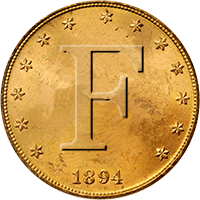Knowing the area is a big help,
A ball field that is known to date back to only 1980 or so isn't likely to produce much 1920 stuff unless the area had some other use before that.
There is a local city park where I live and the history can be researched, the area around 1919 or before was just wooded land with no real use, so the land was donated to the city for a park in 1920. The park is right at 150 acres and at one time a nice size man made lake or a very large pond (it was referred to as a lake) The lake was drained in 1929 due to a child drowning, the lake bed is still there.
Depth of the coins there?
Okay, by more research I found that the beaver tail pull rings (pull and toss tabs) were introduced in 1965 and ran through 1975 when the newer stay-tabs came out. In the park there is a heavy blanket of the pull & toss tabs at the 3" to 5" depth range, with the stay tabs above that. So knowing this how deep on average am I'm going to have to go to get a fairly fresh dropped (lost close to its minted dated) 1925 quarter? I would have to dig at lest through the pull ring bed.
Coins can end up deeper in some places if someone moved dirt around or hauled in fill dirt to level or flatten out an area. So, many times you just have to sample an area to see what comes up and try to gauge the depth by the finds that come out of the ground. Now the above park is gauged, but there is a closed down golf course and in one area below the caddy bench we were finding pull and toss tabs still laying on top of the ground, silver and wheat pennies were less than 3" deep. The golf course was also opened in the early 20's. Now on the same golf course but over next to the 9th hole there wasn't any junk, no tabs but they're was some coins, nothing older than 1930 but they were 4" to 5".
Area or location is everything and each is different, but most has a way to date the area and can be judge by sampling it, dig some pull tabs, what depth are they on average?
Is the clad coming out at unreal depths like 6" or deeper then your not likely to reach the older coins.
So, there isn't a rule, but they're some guild lines that can be followed to help in the hunt.
Mark






